#chemicalreact
Explore tagged Tumblr posts
Text
When sodium hypochlorite (bleach) solution is added to luminol, a chemical reaction occurs that releases energy in the form of light. This is called chemiluminescence. The bleach solution acts as an oxidizing agent, which means it takes electrons away from the luminol molecule. This causes the luminol molecule to become excited, and it releases the energy as light.
🎥 Courtesy: Kendra Frederick
The luminol molecule is made up of two amino groups, a carbonyl group, and an azo group. The amino groups are electron-rich, while the carbonyl group is electron-poor. The azo group is a conjugated system, which means that the electrons in the double bonds can move freely from one atom to another.
When sodium hypochlorite (bleach) solution is added to luminol, the bleach molecules react with the amino groups of the luminol molecule. This reaction takes electrons away from the luminol molecule, which causes the luminol molecule to become oxidized. The oxidized luminol molecule is in an excited state, which means that it has more energy than it normally does.
The excited luminol molecule then releases the extra energy as light. This light is called chemiluminescence. The light emitted by the chemiluminescence reaction is blue because the luminol molecule has a blue fluorescence.
The chemiluminescence reaction between luminol and sodium hypochlorite is catalyzed by the presence of a metal ion, such as iron or copper. The metal ion helps to stabilize the excited state of the luminol molecule, which makes it more likely to release the extra energy as light.
The chemiluminescence reaction is very sensitive to impurities, so it is important to use pure chemicals. The reaction can also be affected by the pH of the solution. The optimal pH for the reaction is around 9.
The chemiluminescence reaction between luminol and sodium hypochlorite can be used to detect blood, as the iron in hemoglobin can catalyze the reaction. The reaction is also used in some commercial products, such as glow sticks and emergency lights.
I hope you enjoyed learning about this. ❤️🙏
#chemiluminescence#luminol#bleach#science#chemistry#scienceexperiment#glowing#light#excitedstate#oxidation#chemicalreact
5K notes
·
View notes
Text
The Beauty of Glowing Chemistry
There’s something fascinating about watching chemistry come to life—literally. Reactions that produce light, like chemiluminescence and bioluminescence, remind us that science isn't just useful—it's beautiful. ✨ These luminous reactions spark wonder and curiosity. Who knew that molecules dancing together could create such magic? 💡 Which glowing reaction has fascinated you the most?
#Chemistry#Science#Chemiluminescence#Bioluminescence#ChemicalReactions#GlowChemistry#LightEmittingReactions#MolecularMagic#ScienceIsBeautiful#ScienceLovers#WonderOfScience#TheBeautyOfScience#GlowingReactions#MesmerizingScience#FascinatingFacts#ScienceAesthetics#IlluminatingIdeas#ScienceMagic#ScienceWonder#NatureAndScience#ScienceEducation#STEMEducation#LearnScience#ScienceCommunication#EducationalContent#ChemistryClass#STEMLearning#ScienceInspiration#CuriousMinds#KnowledgeIsPower
24 notes
·
View notes
Text
Chemistry Tuition That Transforms Struggles Into Strengths
Regardless of whether you are in upper secondary or JC, our Chemistry Tuition assists you in converting confusion to confidence. At SG Chemistry, we've witnessed students enter overwhelmed by reaction pathways, chemical bonding, or stoichiometry and leave knowing and even loving the subject. Our teaching methodology is customized, concise, and result-oriented. Each topic is explained with clarity, accompanied by worksheets, quizzes at regular intervals, and step-by-step summaries to solidify learning. They want more than their grades, though - we promote interest and belief in Chemistry, so that school and national examination success is possible.

#ChemistryTuition#LearnChemistry#ScienceEducation#ChemistryEssentials#STEMLearning#TuitionOnline#AcademicSuccess#PrivateTutoring#HighSchoolChemistry#ChemistryMadeEasy#UnderstandingChemistry#StudyWithMe#ChemistryHelp#ExamPreparation#TutoringServices#ChemicalReactions#ScienceTutor#MasteringChemistry#EducationMatters
0 notes
Text
What Makes Acids and Bases React 2025

What Makes Acids and Bases React 2025
Book-Based Explanation (University Level) Acids and bases react due to the fundamental chemical interactions involving protons (H⁺ ions) and hydroxide ions (OH⁻ ions). This is best understood through several key theories that explain their behavior: 1. Arrhenius Theory - Acid: A substance that increases the concentration of H⁺ ions in aqueous solution. - Base: A substance that increases the concentration of OH⁻ ions in aqueous solution. - Reaction: When an acid and base are mixed, H⁺ from the acid reacts with OH⁻ from the base to form water (H₂O). This is called a neutralization reaction. Example: HCl (aq) + NaOH (aq) → NaCl (aq) + H₂O (l) 2. Brønsted-Lowry Theory - Acid: Proton donor. - Base: Proton acceptor. - This theory expands on acid-base behavior even in non-aqueous solutions. Example: NH₃ + H₂O → NH₄⁺ + OH⁻ Here, water donates a proton (acting as an acid) and ammonia accepts it (acting as a base). 3. Lewis Theory - Acid: Electron pair acceptor. - Base: Electron pair donor. - This theory is more generalized and includes a wider range of chemical reactions. Example: BF₃ (acid) + NH₃ (base) → F₃B←NH₃ In this interaction, ammonia donates an electron pair to boron trifluoride, forming a coordinate covalent bond. Why Do They React? - The driving force of an acid-base reaction is the movement of protons and/or electrons to achieve a more stable, lower-energy state. - These reactions are often exothermic, releasing energy. - The products are typically more stable than the reactants (e.g., water and a salt in neutralization reactions).




Easy Explanation (With Examples) Let’s make this super simple! Think of acids as being a little like "proton throwers" – they have extra protons (H⁺ ions) and want to get rid of them. Bases are like "proton catchers" – they want to grab those protons. Simple Analogy: Imagine acids as people giving away basketballs (protons), and bases are players trying to catch those balls. When a basketball (proton) is passed from the acid to the base, they both feel good – this is the chemical reaction happening! Everyday Example: - Vinegar (acid) reacts with baking soda (base). - It bubbles and fizzes because a chemical reaction happens that makes carbon dioxide gas. Equation (simplified): Acid + Base → Salt + Water Another Simple One: - Lemon juice (acid) and soap (base) can neutralize each other. - The sour and slippery cancel out, making the mixture neutral. So, acids and bases react because one wants to give something (a proton), and the other wants to take it. Together, they form something more balanced. Disclaimer: The easy explanation is designed to help you understand the basic concept using simple words and analogies. However, if you're writing an answer for an exam or assignment, please stick to the book-based explanation above. We’re just trying to make the learning process fun and clear. Scoring less by using simplified answers in exams is not our responsibility. External Resource: For a deeper understanding, you can read the Wikipedia page: Acid–Base Reaction https://en.wikipedia.org/wiki/Acidbase_reaction Related Articles from EdgyThoughts.com: - What If Quantum Computers Could Simulate an Entire Human Brain? https://edgythoughts.com/what-if-quantum-computers-could-simulate-an-entire-human-brain - How Do Enzymes Control Metabolism 2025 https://edgythoughts.com/how-do-enzymes-control-metabolism-2025 Read the full article
#20250101t0000000000000#2025httpsedgythoughtscomhowdoenzymescontrolmetabolism2025#acidbasereaction#ammonia#analogy#aqueoussolution#basechemistry#basketball#behavior#borontrifluoride#brnstedlowryacidbasetheory#carbon#carbondioxide#catcher#chemicalbond#chemicalreaction#chemicalsubstance#chemistry#concentration#concept#coordinatecovalentbond#covalentbond#edgythoughtscom#electron#electronacceptor#electronpair#energy#enzyme#exothermicprocess#explanation
0 notes
Text
WBCHSE Classification Of Elements And Periodicity In Properties Question And Answers
#Chemistry#Science#ChemicalReactions#PeriodicTable#MolecularScience#ClassificationOfElementsAndPeriodicityInPropertiesQuestionAndAnswers
0 notes
Text
youtube
#ChemistrySolutions#ScienceInAction#MoleculesAtWork#SolventAndSolute#SolutionScience#ChemicalMixtures#LearnChemistry#HomogeneousMixtures#ChemistryExplained#SolutionsInChemistry#MolarityMatters#ScienceMadeSimple#ChemicalReactions#ExploringSolutions#SolvingChemistry#Youtube
0 notes
Text

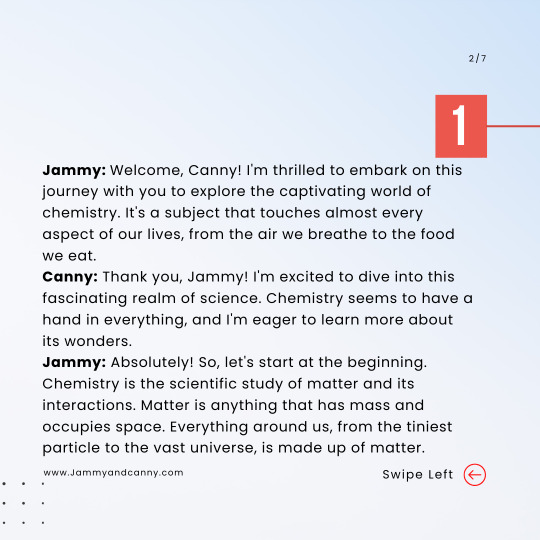

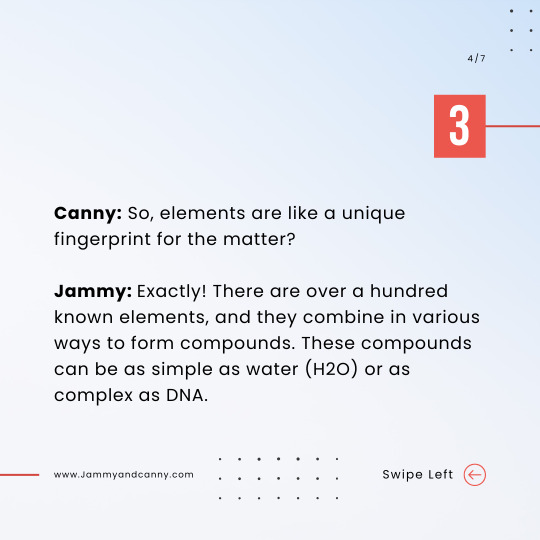
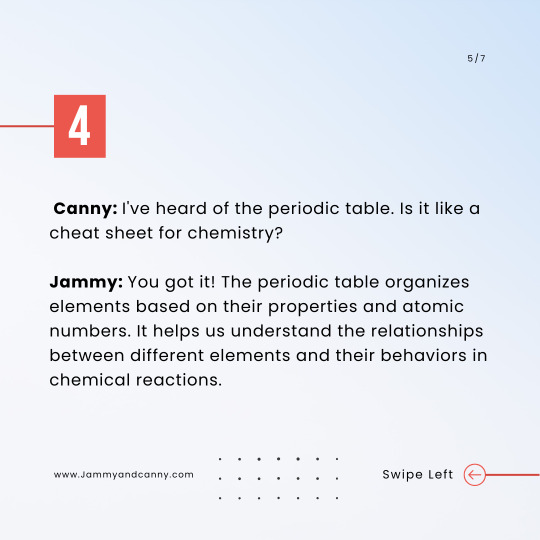
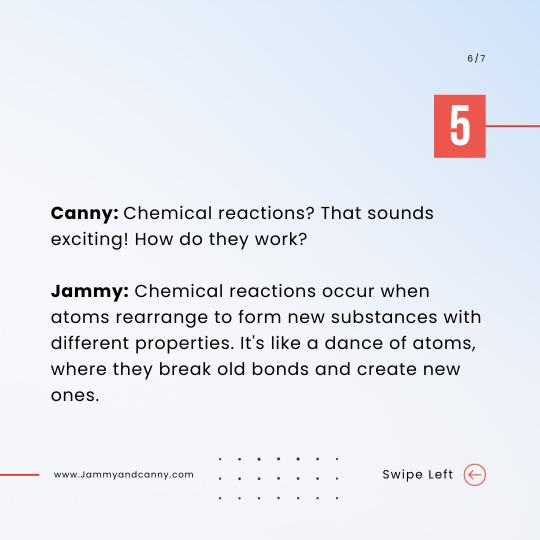

🔬 Dive into the fascinating world of Chemistry through a conversation between an expert and an enthusiast! Uncover the mysteries of matter, reactions, and the building blocks of life. 🌟🧪
#Chemistry#ExpertAndEnthusiast#ScienceExploration#ChemicalReactions#STEM#ScientificDiscovery#MolecularScience#LabLif
0 notes
Text
What is Chemical Reaction?
Chemical reactions are the processes by which substances transform into new materials with different chemical compositions. These reactions involve the breaking and forming of chemical bonds between atoms, leading to the creation of products different from the reactants. The study of chemical reactions is crucial in understanding the behaviour of matter and the changes it undergoes. Enroll now at Tutoroot.
0 notes
Photo

Giant Chalk https://shores.rocks/blog/stem/stem-projects-for-all/giant-chalk/?utm_source=tumblr&utm_medium=social&utm_campaign=ReviveOldPost
0 notes
Text
JC Chemistry Tutor – Excel in H2 Chemistry with Confidence
Looking for a reliable JC Chemistry tutor in Singapore? SG Chemistry offers top-tier H2 Chemistry tuition for A-Level and IP students, taught by experienced ex-MOE tutors. Our classes focus on conceptual clarity, exam strategies, and consistent performance improvement. Trial lessons available now.

#JcChemistryTutor#ChemistryHelp#ScienceTutoring#ChemistryMadeEasy#StudyWithMe#PrivateTutor#OrganicChemistry#InorganicChemistry#ChemistryExperiments#ExamPrep#ChemicalReactions#LearnChemistry#STEMEducation#TutoringTips#ScienceStruggles#SuccessInScience#InteractiveLearning#MathematicsAndScience#AcademicSuccess
0 notes
Text
How Do Enzymes Control Metabolism 2025

How Do Enzymes Control Metabolism 2025
Enzymes are the unsung heroes of metabolism—tiny biological catalysts that drive every chemical reaction in the body with precision and efficiency. Without them, life as we know it wouldn’t exist. In 2025, our understanding of enzymes and their control over metabolic processes has deepened through advances in biotechnology, genetics, and molecular medicine. Book-Level Explanation (University Standard) Metabolism refers to all chemical reactions that occur within living organisms to maintain life. These reactions are divided into two categories: - Catabolism – the breakdown of molecules to release energy - Anabolism – the synthesis of compounds needed by cells Enzymes are biological catalysts—mostly proteins—that speed up metabolic reactions by lowering the activation energy required for the reaction to occur. They are highly specific to substrates and operate under optimal pH and temperature conditions. 1. Enzyme Structure and Function Each enzyme has an active site that binds to a specific substrate. This interaction forms an enzyme-substrate complex, which then undergoes transformation into a product. After the reaction, the enzyme remains unchanged and ready to catalyze another reaction. 2. How Enzymes Regulate Metabolism Enzymes control metabolism through various mechanisms: - Allosteric Regulation: Enzymes can have binding sites other than the active site called allosteric sites. When molecules bind here, they can enhance or inhibit enzyme activity, thereby controlling the metabolic rate. - Feedback Inhibition: This is a classic metabolic control mechanism. When the end product of a metabolic pathway accumulates, it can inhibit an enzyme involved earlier in the pathway, thereby slowing or halting the reaction chain. - Cofactors and Coenzymes: Many enzymes require non-protein molecules to function. These can be metal ions (cofactors) or organic molecules like vitamins (coenzymes). - Gene Expression: The synthesis of enzymes can be regulated at the transcriptional or translational level, determining how much of an enzyme is present in a cell at a given time. - Compartmentalization: In eukaryotic cells, different enzymes are localized in specific organelles (e.g., mitochondria, lysosomes), which keeps reactions organized and tightly controlled. 3. Enzymes and Metabolic Pathways Metabolic reactions occur in sequences called pathways. Each step is catalyzed by a specific enzyme. For instance: - Glycolysis: The breakdown of glucose involves 10 enzyme-catalyzed steps. - Krebs Cycle: In the mitochondria, this cycle processes products of glycolysis to generate ATP. Key regulatory enzymes in these pathways determine the rate and direction of metabolism. 4. Enzyme Kinetics Michaelis-Menten kinetics describe how enzyme activity depends on substrate concentration: v = frac{{V_{text{max}}}}{{K_m + }} Where: - = rate of reaction - = maximum rate - = substrate concentration - = substrate concentration at which reaction rate is half of Changes in these parameters help explain how drugs, mutations, or inhibitors affect metabolic control.




Easy Explanation (Simple and Clear) Think of metabolism like a factory. In this factory, you have many assembly lines working at once—some build things (anabolism), and others take things apart (catabolism) to get energy. Now, who’s doing all the work? That’s right—enzymes! Here’s the simple idea: - Enzymes are like smart workers or machines in your body’s factory. - Each enzyme does one job—very quickly and very accurately. - If an enzyme isn't working right, the whole system slows down or stops. How do they help? - They make reactions go faster. Imagine needing to break a log—it would take hours by hand. But if you had an axe (the enzyme), it would be quick and easy. - Enzymes choose what happens and when. They only work on specific jobs and ignore everything else. - Some enzymes turn "on" or "off" depending on what the body needs, just like machines that only run when needed. Real-life example: When you eat, enzymes in your saliva, stomach, and intestines break down food into sugars, amino acids, and fats. Then, other enzymes help turn those nutrients into energy for your muscles, brain, and everything else. Scientific Developments in 2025 Modern research uses AI-based modeling to understand enzyme function and predict metabolic disorders. Synthetic biology now allows scientists to engineer enzymes with altered functions for industrial and medical applications. CRISPR-based tools also enable precise regulation of enzyme production, offering new treatments for metabolic diseases. Final Thoughts Enzymes are the master regulators of life’s chemistry. They control metabolism by determining which reactions happen, how fast they occur, and when they stop. As we move further into the molecular era of medicine and biotechnology, understanding how enzymes control metabolism will become increasingly crucial to solving diseases and optimizing health. External Reference Link: For a deeper understanding, visit the Wikipedia page on enzymes: https://en.wikipedia.org/wiki/Enzyme Internal Blog Recommendations from EdgyThoughts.com: - Why Do Cells Age and Die 2025 https://edgythoughts.com/why-do-cells-age-and-die-2025 - How Does Dopamine Influence Motivation 2025 https://edgythoughts.com/how-does-dopamine-influence-motivation-2025 Disclaimer: The simplified explanation above is designed to help you understand the concept clearly. However, for exams or academic submissions, always rely on the full, textbook-level content. We aim to help you learn, not to provide shortcuts that could impact your scores. Read the full article
#20250101t0000000000000#2025httpsedgythoughtscomhowdoesdopamineinfluencemotivation2025#2025httpsedgythoughtscomwhydocellsageanddie2025#activationenergy#activesite#adenosinetriphosphate#allostericregulation#aminoacid#anabolism#assemblyline#bindingsite#biology#biosynthesis#biotechnology#catabolism#catalysis#cell(biology)#cellularcompartment#chemicalcompound#chemicalreaction#chemicalsubstance#chemistry#citricacidcycle#cofactorbiochemistry#concentration#concept#disease#dopamine#edgythoughtscom#energy
0 notes
Text
WBCHSE Class 11 Physics For Simple Harmonic Motion: Definition, Examples
#Chemistry#Science#ChemicalReactions#PeriodicTable#MolecularScience#SimpleHarmonicMotionDefinitionExamples
0 notes
Text
The Key Differences Between Hydrated Lime and Quicklime
Hydrated lime and quicklime are both calcium compounds, but they have important differences in how they react and their chemical makeup. Explore these distinctions in our latest blog post, where we delve into their special properties, uses, and how they're made. Read on to discover the detailed differences between hydrated lime and quicklime.
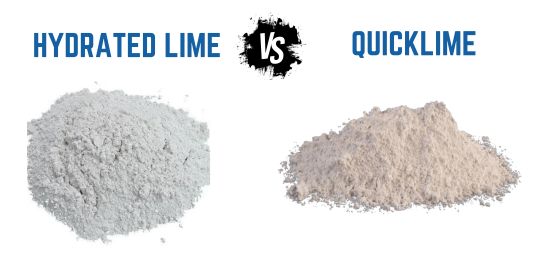
#HydratedLime#Quicklime#LimeComparison#CalciumOxide#CalciumHydroxide#LimeChemistry#ChemicalProperties#IndustrialMaterials#ConstructionMaterials#ChemicalReactivity#ProductionProcesses#Manufacturing#ChemicalEngineering
0 notes
Text

🌊 Embrace Excellence with CERA CRYSTALLINE CRETE Waterproofing System! 🏆
💎 The Perfect Blend: Our unique mix of penetrative swellable salt, cementitious binders, and chemical additives ensures unrivaled performance.
🛡 Crystal Clear Protection: Watch as our active chemicals react with free lime to form insoluble crystals, safeguarding against moisture.
🏗 Built to Last: CERA CRYSTALLINE CRETE becomes an integral part of your concrete, ensuring long-lasting results and substantial savings in time and resources.
🌟 Endless Versatility: Ideal for both internal and external applications, offering resilience against chemical attacks, including sewage and industrial waste.
🚰 Seal Every Pore: Experience unmatched penetration and capillary tract sealing, creating a barrier against water intrusion.
💧 Potable Water Safe: Rest easy knowing our system is VOC-free and compatible with potable water.
📞 Transform Your Projects: Contact us now to protect your concrete structures with CERA CRYSTALLINE CRETE. Unlock the potential for exceptional waterproofing! 💦
#🌊 Embrace Excellence with CERA CRYSTALLINE CRETE Waterproofing System! 🏆#💎 The Perfect Blend: Our unique mix of penetrative swellable salt#cementitious binders#and chemical additives ensures unrivaled performance.#🛡 Crystal Clear Protection: Watch as our active chemicals react with free lime to form insoluble crystals#safeguarding against moisture.#🏗 Built to Last: CERA CRYSTALLINE CRETE becomes an integral part of your concrete#ensuring long-lasting results and substantial savings in time and resources.#🌟 Endless Versatility: Ideal for both internal and external applications#offering resilience against chemical attacks#including sewage and industrial waste.#🚰 Seal Every Pore: Experience unmatched penetration and capillary tract sealing#creating a barrier against water intrusion.#💧 Potable Water Safe: Rest easy knowing our system is VOC-free and compatible with potable water.#📞 Transform Your Projects: Contact us now to protect your concrete structures with CERA CRYSTALLINE CRETE. Unlock the potential for excepti#CERA#CrystallineCrete#WaterproofingSystem#ConcreteProtection#ChemicalReaction#SafeguardYourStructure#HighPerformance#VersatileSolutions#ChlorideFree#LongLastingResults#ConstructionSolutions#SealEveryPore#TransformYourSpace#InstaHome#QualityMatters
0 notes
Text
How to Balance Chemical Equation?
A chemical equation is a symbolic representation of a chemical reaction, consisting of chemical formulas and symbols showing the reactants and products involved in the reaction. The process of balancing chemical equations is essential to ensure that the law of conservation of mass is obeyed. This law states that matter cannot be created or destroyed in a chemical reaction, only transformed. Enroll with Tutoroot.
#balancingchemicalequationsexamples#chemicalreactionformulas#chemicalreaction#balancingchemicalequations
0 notes
Text

youtube

youtube


youtube



#current events#human rights#social justice#controlled opposition#yemen#gaza strip#gaza#palestine#iran#lebanon#syria#free palestine#free gaza#gaza genocide#gazaunderattack#save gaza#maga communism#American communist party#gaza under attack#gaza news#Jackson hinkle#leftist#leftism#socialism#axis of resistance#marxism#fuck neoliberals#fascisim#west bank#middle east
6 notes
·
View notes